There is no single path to sustainability. As Thomas Elmqvist wrote in a recent blog post, each city has its own challenges and opportunities for sustainable growth, and yet we all have much to learn from each other. Reading the past weeks of blogs on the Nature of Cities has been fascinating. Looking at the diversity of writings, it is very interesting to think about cultural and ecological context affects how the writers perceive cities as well as their environments.
So this is where this blog takes off, to explore the context of urban collective action for natural resource conservation in Bangalore, but also to muse aloud on what conditions may be specific to this city, and what may transfer to other contexts.
But first, to describe the context of this city: Bangalore. I have been a long term resident of Bangalore, a “local”, having lived here most of my adult life. Indeed, it is very difficult for me to think of living anywhere else in India, or in the world for that matter. The city is complex, ever changing and challenging – but also cool, green, vibrant, strongly networked (especially socially), and endlessly fascinating. The consequences of city growth are especially noticeable in cities such as Bangalore, where urbanization has made visible impacts over the past couple of decades. Once a much quieter city, famous for its scenic tree lined avenues, bungalows with majestic gardens, large parks, and scenic lakes, Bangalore was called the “Garden City” of India. This once-sleepy city, which used to be called a “pensioners’ paradise” because of its popularity with retired senior citizens, is now home to close to 8.5 million residents, and slowly turning from green to gray.
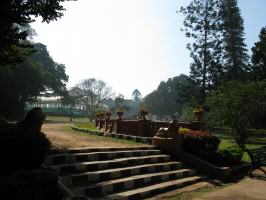
The popular narrative of Bangalore’s urbanization usually begins with an account of the city’s software industry boom. Yet, the region around Bangalore has a much longer history of settlements, with human artifacts dating as far back as the 5th century B.C. Bangalore also has a fairly long and unbroken history of functioning as an economic and cultural capital, being established as the capital of a local king, Kempe Gowda, in the 16th century A.D. This burgeoning city, along with the many villages and surrounding agricultural landscape that sustained its presence, relied like all other settlements do on the availability of a reliable, clean and continuous supply of fresh water. However, unlike many other old settlements, the city of Bengaluru is located in the rain shadow of the Deccan hill ranges, and it lacks the presence of a large river that can be sufficient to provide fresh water.
Fortunately, an innovative response to this challenge of water scarcity was at hand. The terrain around Bangalore is undulating, with a number of small (largely seasonal) streams. These have been dammed to form large, networked series of fresh water tanks (lakes) throughout the region. This is not unique to Bangalore – similar structures are found across large parts of southern India, as in other parts of the world. Some of the lakes in Bangalore city are very old, and can be dated at least as far back as the 5th century, while others are relatively more recent, having been developed during the 19th century. The number of lakes, large and small, was mind bogglingly large – a survey conducted in 1830, for instance, records close to 20,000 water bodies in the surrounding region of Mysore.
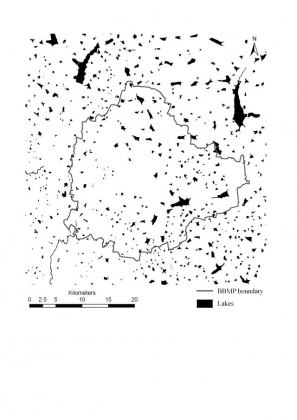
What does all of this have to do with collective action? Lakes were maintained by local communities who formed a closely intertwined social-ecological system, wherein certain communities took up responsibilities for various activities such as channeling and monitoring water distribution, dredging and desilting the lake, or maintenance of the tank embankments. Water from the lakes was used for domestic purposes, agriculture, and to recharge large, open cast community wells placed next to these lakes, as well as for fishing. When water levels began to recede, cattle grazed on common property lands in the exposed wetland areas. Water occupies a significant position in Indian cultural and sacred traditions, and most lakes had lake deities next to the shore, which helped to reinforce restrictions on overuse during specific seasons, through cultural and religious taboos. Lakes were also important foci for biodiversity support, harboring a rich diversity of birds, insects, wildlife and aquatic life.
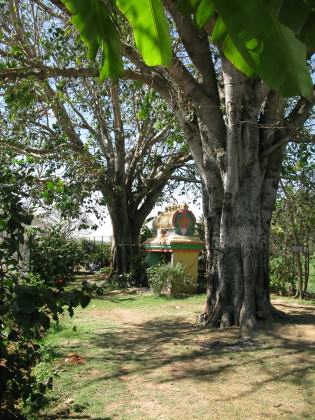
What happened to the lakes next is a testament to the disruptive power of urbanization. Within a relatively short span of a couple of decades, this lake network that survived for centuries has been disrupted. Many lakes have been converted to land uses such as shopping malls and bus parking areas, while others are encroached, polluted with waste and sewage, overgrown with weeds, or dry. The depletion of water in lakes has gone hand in hand with alarming decline in the city’s ground water, on which a large proportion of Bangalore’s peripheral populations depend. The disruption of inter-lake connectivity also leads to frequent flooding in the monsoon season, which exacerbates the spread of diseases such as malaria, diarrhea and dengue.
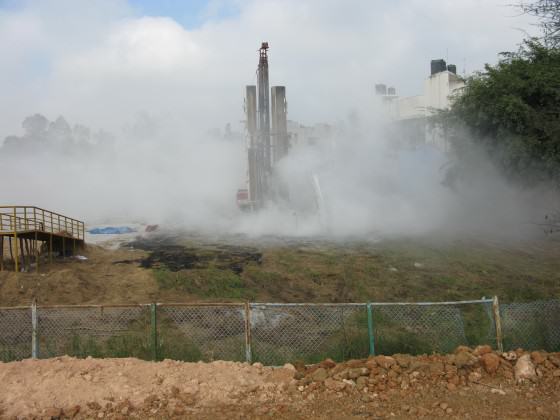
Yet, there are other entrants into this story of overall gloom, playing the role of game changers. Collective action by a wide and disparate set of actors, including local communities, civic action groups, corporate groups, the government and the judiciary have led to a range of efforts to save the remaining lakes, protect them from further encroachment, and restore them. There is a lot to talk about here – but in this blog, I am going to focus on a set of interesting urban oriented experiments using the synergies of urban collective action to develop ecologically and socially inclusive lake restoration plans. For those interested in the aspects of civic action and legal response, more is available here. In the rest of this blog, I will narrate a tale of two lakes to illustrate some of the challenges and opportunities of lake restoration in Bangalore.
A tale of two lakes
The story of collective action in Bangalore’s lakes has a long history, with active bird watchers and naturalists taking great interest in these regions, and working with a variety of government departments, schools and colleges, and other groups to conduct lake monitoring, and organize lake clean-ups. Diverse local groups, from peri-urban villages to software companies, have organized to protest against lake pollution and agitate for restoration. Thus, for instance, the Bellandur lake – Bangalore’s largest water body, with a size of 307 hectares, is almost completely covered with water hyacinth, which is an invasive exotic in India, and polluted by industrial effluents and sewage from a number of apartments, industries and even hospitals.
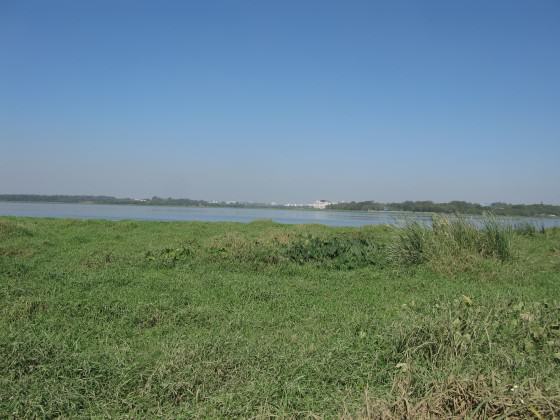
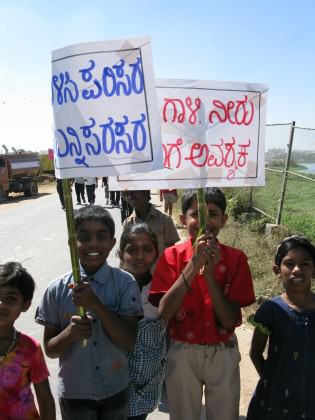
Despite intense efforts by a number of highly committed individuals, it has been close to impossible to get local authorities to begin restoration of the Bellandur lake. This lake represents a particularly challenging case, where there is collective action, but it has not been able as yet to get translated into ecological results. This could be because of the complexity of restoration in this lake. Bellandur receives water from a number of upstream lakes, many of which are polluted, as well as sewage and industrial waste from a large number of apartments and industries. Cleaning up a lake of this size is a large, lengthy and expensive task – and maintaining the lake in a healthy condition requires the cleanup and maintenance of a number of other upstream lakes, as well as monitoring of other locations around the lake to ensure there is no further pollution. Thus, getting traction on restoration at this site is proving to be a hard task.
Another lake located within the same network is the Kaikondanahalli lake, a few kilometers away at the southeastern periphery of Bangalore. Once a naturalists’ paradise, as recently as 2009, this lake was severely polluted with sewage and solid waste.
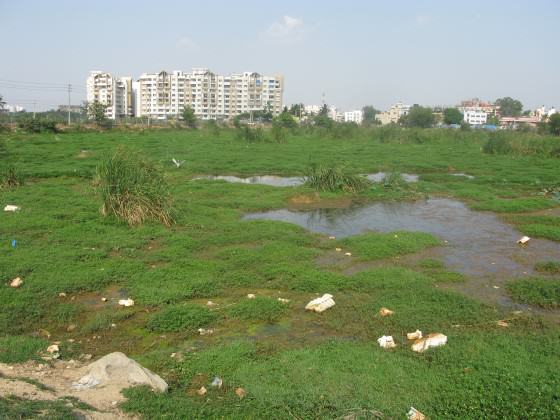
In early 2009, in response to a newspaper report that the Bangalore corporation was planning a restoration of this lake, local residents formed a group with varied expertise in areas such as engineering, ecology, education and outreach, interfacing with the government to refine plans for the restoration keeping in mind ecological principles, and providing a diverse landscaping that included a jogging track, an amphitheater for local events, a cattle wash for original inhabitants of adjacent villages, and recreational and other facilities that could be additionally accessed by a low income school at the periphery of the lake. (See http://www.wipro.org/community/hygienic-sanitation-bangalore.htm.)
The objective was to develop an integrated plan for lake restoration that could be customized for additional lakes, which incorporates attention to conservation, water rejuvenation, urban recreation, and the socio-economic requirements of multiple strata of society. This group includes a diversity of representation from original inhabitants of peri-urban villages around the lake and from recently built high-end apartments and residential layouts, sometimes with very different cultural and political beliefs. This diversity is often a strength while planning, underlining the need to restore for different objectives, but has led to tensions at times!
The response to these efforts has been impressive. Once heavily polluted with sewage from nearby residential areas, this lake has now been restored, draining and dredging the basin to remove silt, diverting sewage, restoring the bund, and planting a rich variety of locally adapted, biodiversity friendly trees and plants around the periphery. The original restoration plans called for conversion of some areas covered by water into landscaped gardens and extension of the jogging path to the biodiversity rich marshy area at one end of the lake. Based on inputs from the community, with additional advice from ornithologists and naturalists familiar with the lake and its non-human inhabitants, these plans were modified. The plans for an expensive, input-intensive landscaped garden with cannas and gladioli was thankfully dropped, and the walkway avoids the marshy, biodiversity rich southern end.
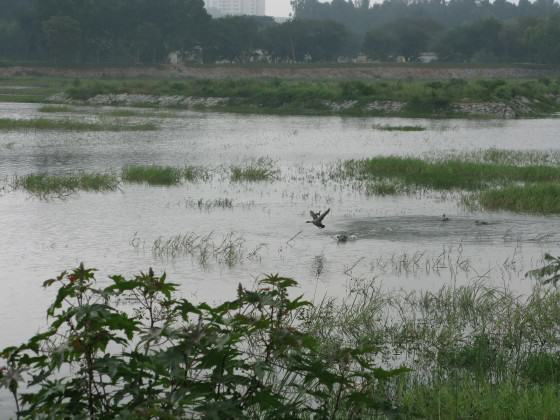
Based on this experience, the group has also developed guidelines to facilitate a larger rejuvenation programme aimed at restoring and conserving a network of lakes in south-eastern Bengaluru. These follow some basic guiding principles, acknowledging that lakes have different, often contrasting uses and benefits, with synergies and tradeoffs between these factors. Instead of valuing one benefit, e.g. water recharge, or bird diversity, above all other factors, we proposed an integrated approach that incorporates consideration of these tradeoffs, keeping in mind factors such as lake location, size, and biodiversity.
The challenges of urban conservation remain severe in cities like Bangalore. Our tale of two lakes shows that collective action by a number of sectors, including the government, local citizens, researchers, NGOs, and business is required to make effective progress towards sustainable ecological and environmental planning. Yet, this is hard to achieve in the context of life in an urban environment, where the social, cultural, and linguistic heterogeneity, coupled with economic inequalities, make it particularly challenging to create social capital and facilitate collective action.
One of the most memorable events in this short history of lake restoration at Kaikondanahalli lake was when my dear friend, colleague and collaborator Elinor Ostrom, who was awarded the 2009 Nobel Prize in Economics for her ground breaking work demonstrating the potential of local communities for conservation, visited the lake in February 2012. We had been working to understand the principles behind collective action in urban contexts for a while before her visit, looking at several lakes including Bellandur and Kaikondanahalli. She planted the locally endemic jackfruit tree at the lake and, although she passed away a few months after her visit, the tree survives in her memory. The tree also has an interesting history that fits into our narrative of urbanization: Lin (as she was known by most) was familiar with jackfruits, having had one in her backyard in Los Angeles, where she grew up!
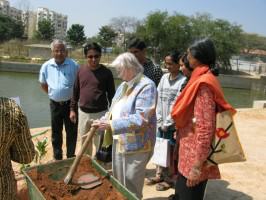
We continue to face challenges at the lake. For instance, an informal settlement that has come up right next to the lake requires access to this water for sanitation and domestic use, as they cannot afford to purchase water, and this part of the city – like other peripheral areas – lacks a piped supply of fresh water. Limiting their access to their lake is clearly socially unjust – yet, permitting large scale use of the lake for activities such as washing of clothes will only result in further pollution. Even more disturbing are recent attempts by vested political, interests to encroach on the lake for developmental activities (see link above).
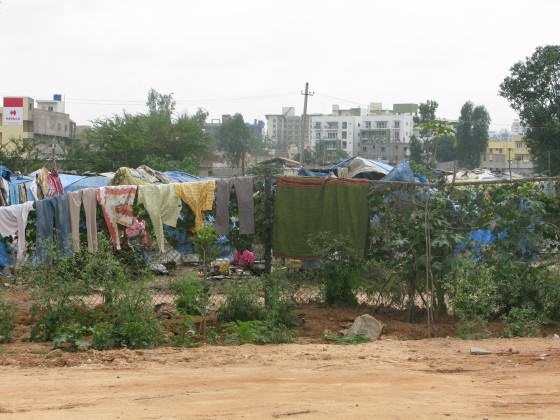
Collective action is especially challenging in urban contexts, where people are on the move, preoccupied, and living in heterogeneous, dense, assemblages, often in relative anonymity. Using collective action to successfully facilitate the sustainable management of natural resources is even more tricky in cities. There needs to be scope for the people affected by the mismanagement of urban forests and lakes (often the poorest of the urban poor) to be able to have some input into their management and monitoring, and prompt punishment of offenders. Yet, after many decades of neglect, lake management in Bangalore shows some signs of hope because of citizen action. Such activities are not unique to Kaikondanahalli – other lakes in Bangalore, including Puttenahalli lake and Ambalipura lake are other inspiring examples of community-involved lake restoration. Such programs provide a path forward for sustainable, participatory and green (or blue!) urban futures.
One of the original objectives of this blog post was to think about which parts of this experience are unique to Bangalore, and what is common to other cities. In Bangalore, as possibly in many other countries where the urban footprint remains relatively small and recent – at least in contrast to countries in Europe and northern America – the heterogeneity of uses of environmental commons such as lakes is high, with fishers and fodder collectors, bird watchers and joggers, artists and temple visitors, rich apartment dwellers and underprivileged slums, and many others forming a loose, sometimes coupled and sometimes antagonistic social network. Managing a lake under such circumstances is challenging, in part because defining what constitutes a “community” of users is not easy.
Social, economic and cultural inequities can be perpetuated or even exacerbated in such systems of collective action. This exacerbation of environmental inequities is of course not unique to Bangalore, and have been shown elsewhere, but in the Bangalore context such inequities are particularly important to address because the disparities are often strong, and visibly unfair. However, the broader take-away lesson for multi-level governance, that collaboration between collective groups of citizens and local government is required for conservation to succeed in cities, seems to be a more general one, one that will apply to urban areas across the world.
Harini Nagendra
Bangalore, India

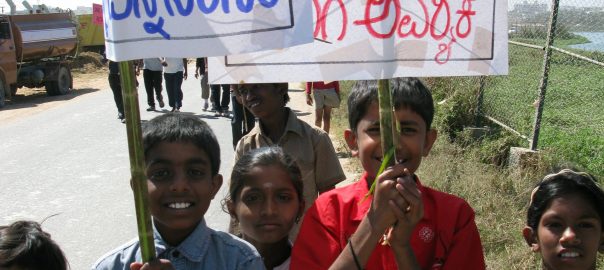






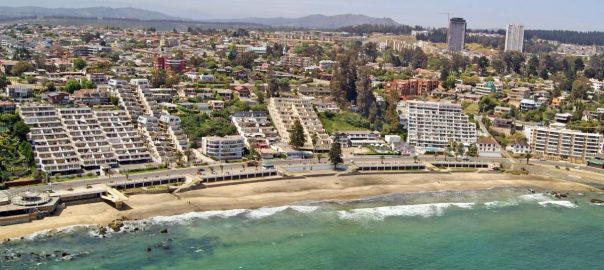
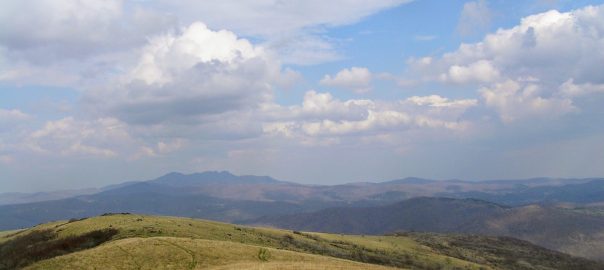
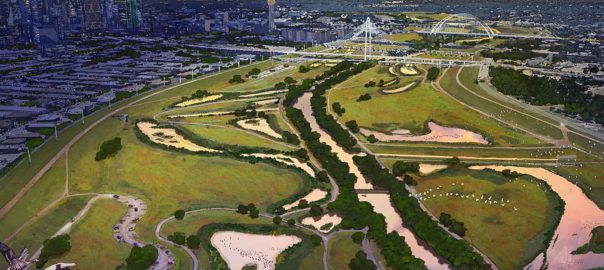

With increasing urbanization and increasing demand/pressure for “development”, the collective civic action will continuously face new challenges. As you have pointed out the communities of users are made of different groups with very different needs and preferences. I wonder if and how collective action changes those inter-group relationships and can something be done to forge such changes? Thanks for a very interesting article.
Hi Grant,
Good to hear from you, and thanks for these comments. Equity is indeed a big challenge, in India and the US (and most parts of the world, unfortunately). As more “urban” uses of lakes begin to predominate, such as jogging and nature watching, unfortunately, the poor and traditional livelihood users begin to get squeezed out. In some lakes in Bangalore, these are beginning to be addressed by (for instance) designating separated sections of the lake for more active use such as cattle washing, domestic use and idol immersion – it’s nowhere near sufficient, and there needs to be more such out-of-the-box thinking, but at least represents a start in the right direction. Political representation can be powerful in changing these sorts of things, at least around election time – would that be true for the US as well? All the best, and keep reading and commenting – Harini
Hi Cecilia,
I very much enjoyed reading your blog post as well, and as you say – this is a great way of learning about what works (or does not ) in each others’ cities and contexts! It was wonderful to meet you in Bombay, and I hope you get to make it to Bangalore next time so we can visit some of these lakes 🙂
Hi Andrew!
Apologies for the vastly delayed response, am settling in after some travel. You raise a very important point, of the mismatch of ecological and jurisdictional boundaries – especially critical for lake networks. We do have a partial solution in Bangalore, in that there are some legislative constituencies that cover areas within, and outside the city with the same elected representative in charge – but this does not completely address the problem, of course. New integrated plans are being developed for metropolitan regional development, which could provide a way of addressing this issue, but their effectiveness remains to be seen…
Hi Harini,
I enjoyed very much reading your reflections on Bangalore’s reality. It is instigating to see how we have some similarities and can learn with other city’s experiences, in spite of the differences. The context was fundamental to understand the landscape and cultural dynamics of the region, and how waters and biodiversity are vital for urban life. Actually, this is valid for every city/region. It is also very alarming that although science has already pointed out that we must plan and design cities in a more ecological way, the decision makers, legislators and even urban dwellers resist changing the concrete/asphalt paradigm focused on cars, not in people and natural processes.
I believe this blog is a powerful means for us to gain momentum for real change, once we can really get connected and learn with each other. We must make this blog the most visible and readable, so we can spread the word to different actors of cities around the globe. Thanks David for this great initiative!
By the way, I loved my stay in India. Hope to go back soon!
Harini –
Thanks for the interesting article from India! I am an Architecture major at Auburn University in the southeastern part of the United States, and it’s always interesting to hear stories from cultures halfway around the globe, and how oftentimes, we deal with the same socioeconomic and natural issues.
Hearing about water usage in lakes is of particular interest to us in this part of the United States as we have recently (over the past 5-10 years) undergone some pretty bad droughts that have bought up the same issues you bring up in your post. You say, “Many lakes have been converted to land uses such as shopping malls and bus parking areas, while others are encroached, polluted with waste and sewage, overgrown with weeds, or dry,” and this is exactly what happens all over the world as land is taken no matter the cost to natural systems in the name of economic prosperity.
The most interesting part to me about all of this is the collective use of lakes in India, and how the lack of piped water makes this access essential to the daily life of citizens. You mention the informal settlement that needs the water to wash cloths, yet that only pollutes the water! This type of injustice no matter how you look at it, is what I am most concerned with figuring out. It is embarrassing how parts of the world (like North America) can simply take a constant source of clean water for granted, while others are struggling for this luxury.
Do you have any ideas on how to fix this or what a solution might be? Is the multi-level governance doing anything to remedy the problems that these people and these lakes face?
I look forward to reading many more posts and learning about how the rest of the world deals with land use and how it might be applied to problems that all of us face.
All the best,
Grant Kersey
Thanks for this interesting post, Harini, which offers some important universal lessons, despite — or perhaps because of — Bangalore’s mixed success record. There has clearly been a longstanding protocol for the management of these lakes. However, the size, increasing diversity and increasingly fractured social relations of Bangalore — and so many other cities — seem to have stymied continued collective action. Shared space remains an excellent incentive. However, sharing space becomes more difficult wherever environmental processes are involved because the scale of action goes beyond that of the jurisdictional boundaries of a city (often upstream, in your account), requiring the buy-in of regional actors. This shows the potential usefulness of a city-region approach. Any stories from Bangalore in that respect?